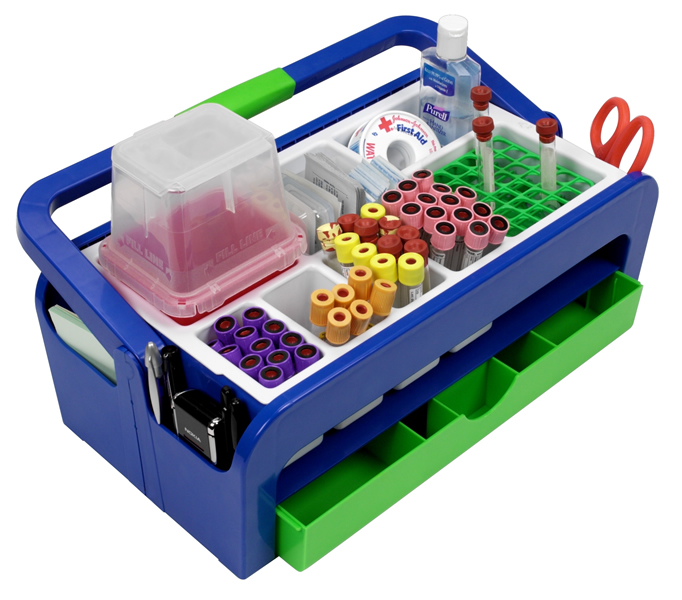How to Obtain Your Phlebotomy License: A Complete Guide to Certification & Career Success
Embarking on a career as a phlebotomist is a rewarding pursuit for those interested in healthcare and patient care.Whether you’re just starting out or looking to advance, obtaining your phlebotomy license is a crucial step towards professional recognition and job stability. In this extensive guide, we’ll walk you through the entire process-covering certification requirements, practical tips, benefits, and real-world insights to help you succeed in your phlebotomy career.
What Is a Phlebotomy License?
A phlebotomy license is an official credential that authorizes an individual to perform blood collection procedures legally. licensing requirements vary by state, but generally, they serve as proof that you have completed the necessary training, possess the required skills, and adhere to safety standards.
Holding a valid license not only complies with state regulations but also boosts your credibility,enhances employability,and potentially opens doors to advanced healthcare roles.
How to obtain Your Phlebotomy License: Step-by-step
1. Understand State-Specific Licensing Requirements
Before diving into training, research your state’s specific licensing or certification requirements. Some states require certification from approved bodies,while others may not regulate phlebotomists directly. Visit your state’s health department website or contact local healthcare boards for accurate information.
2. Complete an Accredited Phlebotomy Training Program
The cornerstone of becoming a licensed phlebotomist is completing a reputable training program. These programs typically cover:
- Venipuncture techniques
- Blood sample handling and processing
- Safety protocols and infection control
- Patient interaction and communication skills
- Medical terminology
Choose programs accredited by organizations like the National Accrediting Agency for Clinical Laboratory Sciences (NAACLS) or approved by your state health department. Duration varies from a few weeks to several months.
3. Gain Practical Experience Through Externships
Hands-on experience is vital. Many training programs include externships or clinical practice components.If not, seek opportunities at local clinics or hospitals to practice blood collection under supervision. This experience builds confidence and enhances your skills according to industry standards.
4.Pass the Certification exam
Several reputable certification bodies recognize phlebotomy certification, such as:
| Certification Body | Requirements | Exam Details |
|---|---|---|
| National Healthcareer Association (NHA) | Completion of accredited training & minimum 100 blood draws | Multiple-choice exam, online or in-person |
| American Medical Technologists (AMT) | High school diploma or equivalent + training & experience | Written exam with practical evaluation options |
| Phlebotomy Society | Varies by program | Certification exam with clinical components |
Preparing thoroughly for these exams is critical. Many courses offer practice tests and prep materials to boost your confidence.
5. Apply for State Licensure (If Required)
Once certified, submit your application for licensure with your state’s health department if licensing is mandated. This process frequently enough involves submitting proof of certification,training completion,and paying applicable fees. Some states permit reciprocity or endorsement for licensed professionals from other states.
6. Maintain Certification and License
To retain your license, you’ll generally need to complete Continuing education Units (ceus) and renew periodically. Staying current on best practices ensures compliance and career growth.
Benefits of Obtaining Your Phlebotomy License
- Legal authorization to perform blood draws professionally
- Enhanced job prospects in hospitals, clinics, and labs
- Higher earning potential compared to non-licensed counterparts
- Career advancement opportunities into supervisory or specialized roles
- Patient safety and trust by adhering to industry standards
Practical Tips for Aspiring Phlebotomists
- Choose Accredited Programs: Ensure your training is recognized nationally or by your state.
- Build Strong Hand Skills: Practice venipuncture frequently during training to improve proficiency.
- Develop Excellent Communication Skills: Be patient and empathetic with patients, especially those with needle fears.
- Stay Informed: Keep up with safety protocols, new technology, and best practices.
- Network Professionally: Join associations like the National Phlebotomy Association for career growth and resources.
case Study: From Trainee to Healthcare Professional
Jessica, a recent graduate from a certified phlebotomy program, took the following steps to build her career:
- Completed her practical training with excellent feedback
- Pursued certification through NHA
- applied for licensure in her state with all needed documentation
- secured a position at a local hospital’s lab
- Continued her education, aiming for a Medical Assistant certification for further career advancement
Jessica’s story exemplifies how dedication, proper training, and licensure pave the way for a successful healthcare career in phlebotomy.
First-Hand Experience: What It’s Like to Be a Phlebotomist
Many new phlebotomists describe thier roles as challenging yet highly rewarding. Building rapport with patients, especially those who are anxious, is key. Proper training and licensure not only validate your skills but also boost your confidence. Remember, safety and professionalism are paramount-always follow your training and update your skills regularly.
Final Thoughts
Obtaining your phlebotomy license is a straightforward but vital step toward entering a dynamic and fulfilling healthcare profession. With the right training, certification, and dedication, you can achieve career success and make a meaningful difference in patients’ lives. Stay informed, practice diligently, and always adhere to safety standards to thrive as a licensed phlebotomist.
Start your journey today by researching accredited training programs and the licensing requirements in your state-your future in healthcare awaits!
Get Started on Your Phlebotomy Career today!
If you’re ready to take the next step, explore accredited phlebotomy programs, prepare for your certification exam, and set yourself on the path to a rewarding healthcare career.
